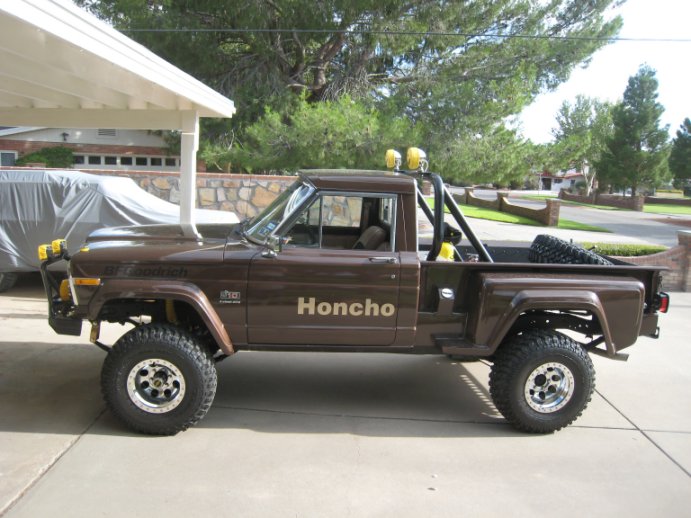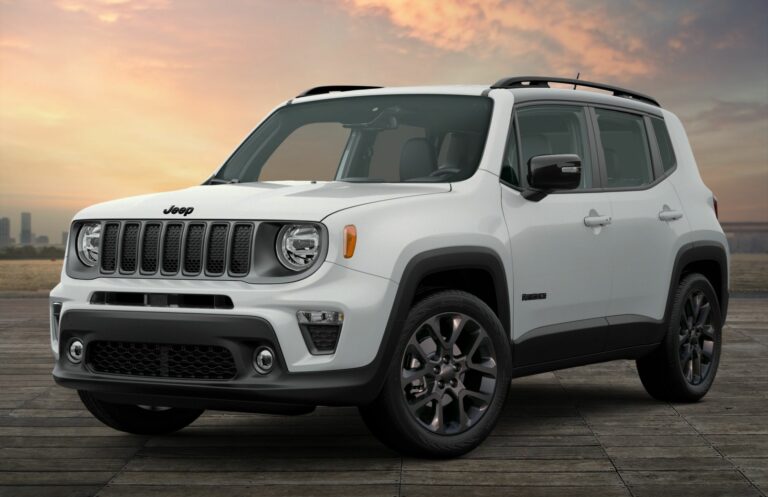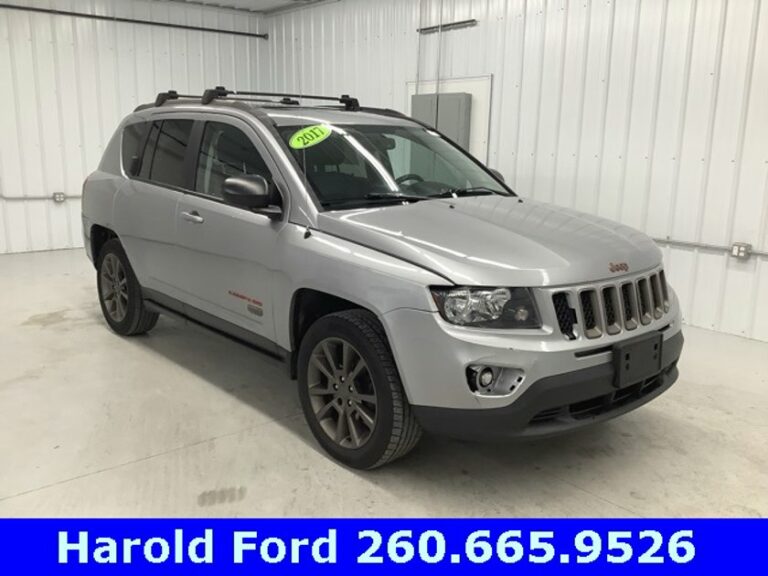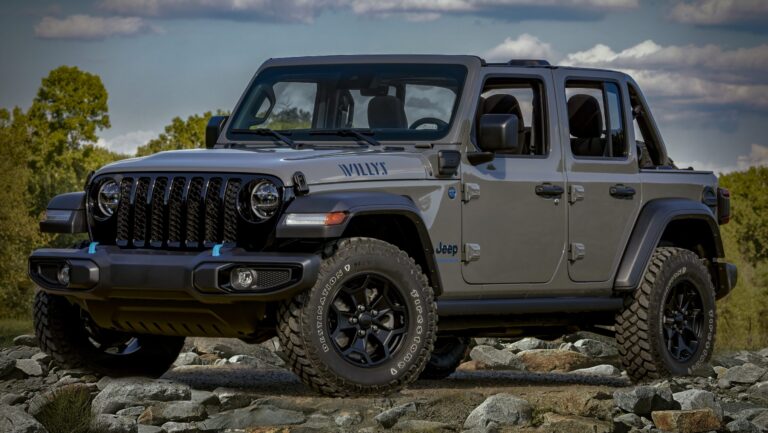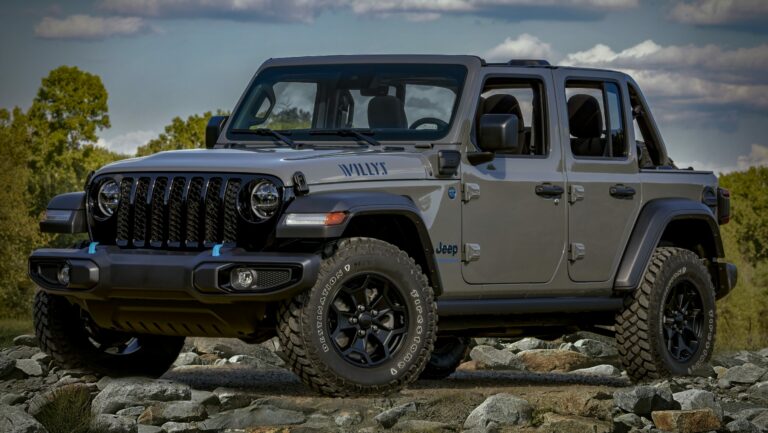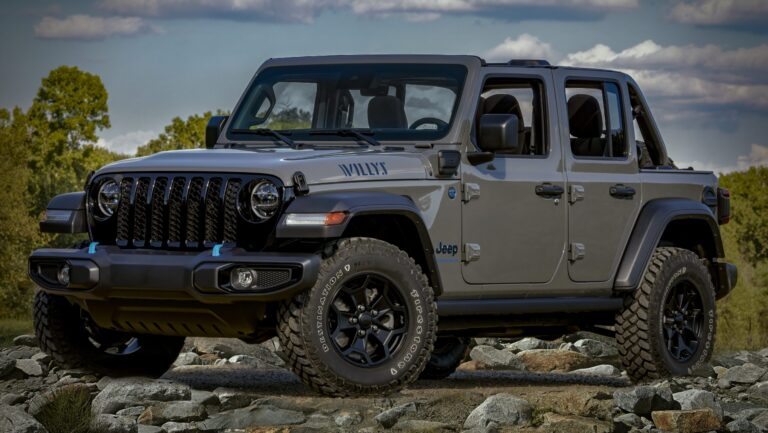1963 to 1966 J-Series Jeep Trucks For Sale: A Comprehensive Buyer’s Guide
1963 to 1966 J-Series Jeep Trucks For Sale: A Comprehensive Buyer’s Guide jeeps.truckstrend.com
For the discerning classic truck enthusiast, few vehicles combine rugged utility with iconic design quite like the early J-Series Jeep trucks. Often affectionately referred to by their original marketing name, "Gladiator," these vehicles from 1963 to 1966 represent the genesis of a legendary lineage. They stand as a testament to American engineering, built during an era when trucks were designed first and foremost for work, yet possessed an undeniable charm. If you’re considering adding one of these vintage workhorses to your garage, this comprehensive guide will navigate you through their history, features, buying considerations, and what to expect from ownership.
The Genesis of a Legend: A Brief History (1963-1966)
1963 to 1966 J-Series Jeep Trucks For Sale: A Comprehensive Buyer’s Guide
The J-Series Jeep truck, launched in 1963, marked a significant departure from Willys-Overland’s previous truck designs. Built on the revolutionary "Gladiator" platform shared with the luxurious Wagoneer SUV, these trucks were full-sized, modern, and offered an unprecedented blend of comfort and capability for their time. The 1963-1966 models are particularly special as they represent the original vision, featuring distinctive styling elements and a unique powertrain that set them apart.
Initially, these trucks were designated by their Gross Vehicle Weight (GVW) ratings and wheelbase: J-200 models typically had a 120-inch wheelbase, while J-300 models featured a longer 126-inch wheelbase. Within these series, further designations (e.g., J-210, J-220, J-230 for J-200 series; J-250, J-260, J-270, J-280 for J-300 series) denoted specific trim levels or configurations. In late 1965, Kaiser Jeep simplified the nomenclature, transitioning to a four-digit system: J-2000, J-3000, and later J-4000 series, though the essential platform remained consistent. This early period is characterized by the presence of the innovative but complex Kaiser-Jeep "Tornado" OHC (Overhead Cam) inline-six engine, making these years particularly unique for collectors.
Why Own a 1963-1966 J-Series Jeep Truck?
Ownership of an early J-Series Jeep truck is more than just acquiring a vehicle; it’s embracing a piece of automotive history.
- Classic Appeal & Nostalgia: The distinct grille, robust lines, and timeless design evoke a powerful sense of nostalgia. They are head-turners at car shows and on the open road, instantly recognizable as classic Jeeps.
- Robust & Durable Construction: Built during an era of over-engineering, these trucks were designed for heavy-duty work. Their full-frame construction, solid axles, and leaf spring suspension make them incredibly resilient and capable of handling tough conditions.
- Versatility: Whether you’re looking for a capable off-roader, a unique utility vehicle for your property, or a distinctive cruiser, the J-Series can fit the bill. Many were equipped with legendary Dana axles and Spicer transfer cases, making them formidable in 4×4 configurations.
- Growing Collectibility: As fewer original examples remain, the value of well-preserved or expertly restored J-Series trucks is steadily appreciating. They represent a smart investment for enthusiasts.
- Simplicity of Mechanics (Relatively): Compared to modern, computer-controlled vehicles, the mechanical systems of these trucks are straightforward. For the mechanically inclined, maintenance and repairs are often manageable, making them ideal project vehicles.
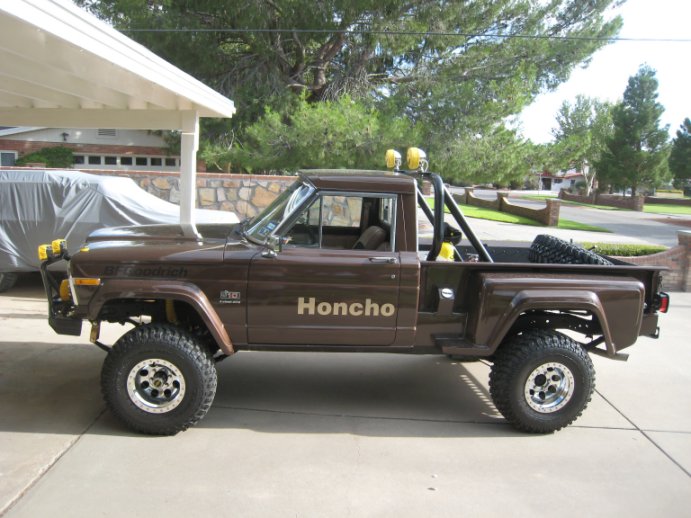
Key Features and Variations of the Early J-Series
Understanding the specific features of the 1963-1966 models is crucial for any potential buyer.

- Body Styles: The J-Series offered two primary bed styles:
- Thriftside: A traditional "steps-side" or "fender-side" bed with external fenders, offering a classic, utilitarian look.
- Townside: A "fleetside" bed with smooth, flush sides, presenting a more modern and integrated appearance.

Both were available in 7-foot and 8-foot lengths.
- Engine Options: The primary engine for these early years was the Kaiser-Jeep "Tornado" 230 cu in (3.8 L) OHC I6. This was a pioneering overhead cam design for an American production truck and offered good power for its time (around 140 hp). While innovative, it’s known for specific maintenance quirks, including potential oil leaks and valve train noise if not properly cared for. Later J-Series models introduced AMC V8s, but for 1963-1966, the Tornado is largely original.
- Transmission Options: Buyers could choose from various transmissions:
- Manual: Typically a Borg-Warner T-90 3-speed or a T-98 4-speed.
- Automatic: The Borg-Warner AS-8W (known as the "Hydramatic" or "Turbo-Hydramatic" by some) was also available.
- Drivetrain: Most J-Series trucks were available in both 2-wheel drive (2WD) and 4-wheel drive (4WD) configurations. The 4WD models utilized a robust Dana 20 transfer case (or earlier Dana 18), paired with Dana 44 (front) and Dana 53 or 60 (rear) axles, providing impressive off-road capability.
What to Look For When Buying: A Buyer’s Guide
Purchasing a vintage truck requires careful inspection. Here’s what to prioritize when evaluating a 1963-1966 J-Series:
- Rust: The Number One Enemy: These trucks are prone to rust, especially in areas where water and salt accumulate. Thoroughly inspect:
- Cab corners and rocker panels
- Floor pans (front and rear)
- Bed floors and inner/outer fenders
- Frame rails (especially near spring mounts and body mounts)
- Around windshield and rear window seals
Extensive rust can quickly make a project economically unfeasible.
- Engine Condition (Tornado OHC I6):
- Listen for excessive valve train noise or knocking.
- Check for significant oil leaks, particularly around the head gasket and timing cover.
- Confirm it starts and runs smoothly. Parts for the Tornado, while available, can be more specialized and costly than for common V8 swaps.
- If a V8 swap has been done, evaluate the quality of the conversion (wiring, mounts, cooling, exhaust).
- Transmission & Drivetrain:
- Test all gears in manual transmissions for smooth engagement and no grinding.
- Check automatic transmission fluid for color and smell; test shifting through all gears.
- Engage 4WD (if equipped) and test high and low ranges. Listen for clunking or grinding from the transfer case or axles.
- Inspect U-joints and driveshafts for play.
- Suspension & Steering: Look for worn leaf springs (sagging), worn shackles, and bushings. Check for excessive play in the steering box and tie rods. A truck that wanders excessively will need significant front-end work.
- Brakes: These trucks originally came with drum brakes all around. Test their effectiveness. Check for leaks in the master cylinder or wheel cylinders. Many owners upgrade to power brakes or disc brakes for safety.
- Electrical System: Original systems were often 6-volt (though 12-volt conversions are common). Check all lights, gauges, wipers, and heater fan. Look for shoddy wiring or evidence of amateur repairs, which can be fire hazards.
- Interior Condition: Assess the condition of the dash, seats, headliner, and door panels. Original parts are rare, so expect wear.
- Documentation: A clear title is paramount. Any service records or history of modifications are a significant bonus.
- Originality vs. Modifications: Decide whether you want a historically accurate restoration candidate or a modified driver. Original, unmolested examples command higher prices, but well-executed modifications can enhance usability.
Restoration vs. Daily Driver: Considerations for Ownership
Owning an early J-Series truck is a commitment that varies based on your intended use.
- Parts Availability: While many mechanical components (like axles, some transmission parts, and common engine swap parts) are readily available or interchangeable with other period vehicles, specific body panels, unique trim pieces, and certain Tornado engine parts can be challenging to source. Online forums, specialist suppliers, and salvage yards are your best friends.
- Maintenance & Repairs: These trucks are generally simpler to work on than modern vehicles, making them popular with DIY mechanics. However, finding a qualified shop experienced with vintage vehicles can be difficult and costly. Regular maintenance is key to reliability.
- Common Upgrades: Many owners choose to upgrade their J-Series trucks for modern drivability and safety. Popular modifications include:
- V8 Engine Swaps: AMC 360/401, Chevy 350, Ford 302/351 are common.
- Power Steering & Power Brakes: Greatly improve drivability.
- Disc Brake Conversions: Enhance stopping power significantly.
- 12-Volt Electrical Conversion: Standardizes electrical components and allows for modern accessories.
- Modern Seats: For comfort during longer drives.
- Fuel Injection Conversion: For improved reliability and fuel economy.
- Cost of Ownership: Beyond the purchase price, factor in the cost of parts, potential repairs, insurance (classic car insurance is often affordable), and fuel (they are not known for their fuel efficiency).
Finding Your J-Series: Where to Look
The search for your ideal J-Series can be part of the adventure.
- Online Marketplaces: Websites like eBay Motors, Craigslist, and Facebook Marketplace are common starting points, though quality can vary wildly.
- Classic Car/Truck Specific Sites: Hemmings Motor News, Bring a Trailer, ClassicCars.com, and local classic vehicle listings often feature higher-quality examples.
- Specialty Jeep Forums and Enthusiast Groups: Online communities (e.g., IFSJA.org – International Full Size Jeep Association) are excellent resources for finding vehicles, parts, and expert advice.
- Auction Houses: Reputable classic car auctions can be a good source for restored or well-preserved examples, but be prepared for higher prices and buyer’s premiums.
- Word-of-Mouth: Sometimes the best deals are found through local connections or obscure listings.
Estimated Price Guide for 1963-1966 J-Series Jeep Trucks For Sale
Prices for vintage vehicles fluctuate significantly based on condition, originality, modifications, rarity, and market demand. The table below provides a general range for the 1963-1966 J-Series Jeep trucks (Gladiators).
| Year | Model Designations (Examples) | Condition Category | Estimated Price Range (USD) | Key Influencing Factors |
|---|---|---|---|---|
| 1963 | J-200, J-300, J-210, J-220, J-230, J-250, J-260, J-270, J-280 | Project/Parts | $2,000 – $8,000 | Extensive rust, non-running, major mechanical issues, incomplete. Ideal for full restoration or parts donor. |
| 1963 | J-200, J-300, J-210, J-220, J-230, J-250, J-260, J-270, J-280 | Driver Quality | $8,000 – $20,000 | Runs and drives, minor rust, needs cosmetic work or refreshing, suitable for regular use with some TLC. |
| 1963 | J-200, J-300, J-210, J-220, J-230, J-250, J-260, J-270, J-280 | Restored/Excellent | $20,000 – $50,000+ | High-quality restoration, minimal flaws, original or period-correct components, rare configurations. Show-ready condition. |
| 1964 | J-200, J-300, J-210, J-220, J-230, J-250, J-260, J-270, J-280 | Project/Parts | $2,000 – $8,500 | Similar to 1963, potential for slightly higher demand due to specific production numbers. |
| 1964 | J-200, J-300, J-210, J-220, J-230, J-250, J-260, J-270, J-280 | Driver Quality | $8,500 – $21,000 | Good running condition, minor cosmetic needs, reliable for local driving. |
| 1964 | J-200, J-300, J-210, J-220, J-230, J-250, J-260, J-270, J-280 | Restored/Excellent | $21,000 – $52,000+ | Concours quality, exceptional attention to detail, highly desirable. |
| 1965 | J-2000, J-3000 (re-designation) | Project/Parts | $2,500 – $9,000 | Slightly higher due to improved features or later production. |
| 1965 | J-2000, J-3000 | Driver Quality | $9,000 – $22,000 | Solid condition, ready to drive, may need minor improvements. |
| 1965 | J-2000, J-3000 | Restored/Excellent | $22,000 – $55,000+ | Pristine condition, high demand for specific models (e.g., Thriftside). |
| 1966 | J-2000, J-3000 | Project/Parts | $2,500 – $9,500 | Similar condition factors, good base for a custom build. |
| 1966 | J-2000, J-3000 | Driver Quality | $9,500 – $23,000 | Reliable driver, good foundation for future improvements. |
| 1966 | J-2000, J-3000 | Restored/Excellent | $23,000 – $60,000+ | Top-tier examples, show-quality, often with desirable options or rare configurations. |
Note: The original naming convention for 1963-1965 was J-200 (120-inch wheelbase) and J-300 (126-inch wheelbase) with additional numbers (e.g., J-210, J-220, J-230, J-250, J-260, J-270, J-280) denoting specific configurations. In late 1965, Kaiser Jeep introduced the J-2000 and J-3000 series, which continued into 1966 and beyond, with the J-4000 series added later. The price ranges are highly dependent on the vehicle’s actual condition, location, and specific options.
Frequently Asked Questions (FAQ)
Q: What’s the difference between a "Gladiator" and a "J-Series" Jeep truck?
A: "Gladiator" was the marketing name used by Willys-Overland and then Kaiser-Jeep for their new full-size truck line introduced in 1963. The internal model designation for these trucks was "J-Series." So, all Gladiators are J-Series trucks, but the Gladiator name was eventually dropped in favor of just "Jeep Truck" or "J-Series" in later years.
Q: Are parts for the 1963-1966 J-Series hard to find?
A: It depends on the part. Common mechanical components (engine rebuild kits for the Tornado, brake parts, some suspension components, and especially parts for common V8 swaps) are generally available from aftermarket suppliers or specialized Jeep parts vendors. However, specific body panels, unique interior trim, grilles, and emblems for these early years can be quite challenging and expensive to source, often requiring a diligent search on enthusiast forums or salvage yards.
Q: Can a 1963-1966 J-Series Jeep truck be a reliable daily driver?
A: Yes, with proper maintenance and potentially some key upgrades, a J-Series truck can be a reliable daily driver. However, be realistic about its vintage nature. It won’t have the comfort, fuel economy, or modern safety features of a new vehicle. Upgrades like power steering, power brakes (especially disc brakes), and a 12-volt conversion are highly recommended for daily use.
Q: What is the "Tornado" OHC I6 engine known for?
A: The Tornado engine was innovative for its time, being the first mass-produced overhead cam engine in the U.S. It offered good power. However, it’s known for being prone to oil leaks (especially from the valve cover and timing cover), and its complex valve train requires specific maintenance. Parts can be more specialized than for conventional pushrod engines. Many owners opt for a V8 swap due to easier parts availability and more power.
Q: Are these trucks good for off-roading?
A: Absolutely! Their robust full-frame chassis, solid axles, and capable 4WD systems (Dana 20 transfer case, Dana 44 axles) make them formidable off-roaders. Stock ground clearance and suspension might limit extreme rock crawling, but for trail riding and overland adventures, they are excellent platforms. Many are modified with lifts, larger tires, and more powerful engines for serious off-road use.
Q: What are the most common modifications for these trucks?
A: The most common modifications include:
- Engine Swaps: Replacing the original Tornado I6 with a more powerful and parts-friendly V8 (e.g., AMC 360/401, Chevy 350, Ford 302/351).
- Brake Upgrades: Converting to power brakes and/or front disc brakes for improved stopping power and safety.
- Power Steering: Adding power steering to make low-speed maneuvering much easier.
- 12-Volt Conversion: If the truck is still 6-volt, converting to 12-volt allows for easier use of modern accessories and simplifies electrical system maintenance.
- Suspension Lifts: For larger tires and improved off-road clearance.
Conclusion
The 1963 to 1966 J-Series Jeep trucks, the original Gladiators, offer a unique blend of historical significance, rugged capability, and classic American styling. They are not merely vehicles but tangible pieces of automotive heritage, representing an era of no-nonsense utility and pioneering design. While ownership requires a commitment to maintenance and an understanding of vintage vehicle quirks, the rewards – from the distinct driving experience to the admiring glances – are immeasurable. Whether you’re seeking a challenging restoration project, a weekend cruiser, or a capable workhorse, an early J-Series Jeep truck is a classic choice that continues to stand the test of time. Embark on your search with knowledge, patience, and a passion for these magnificent machines, and you’ll find a rewarding ownership experience awaiting you.

